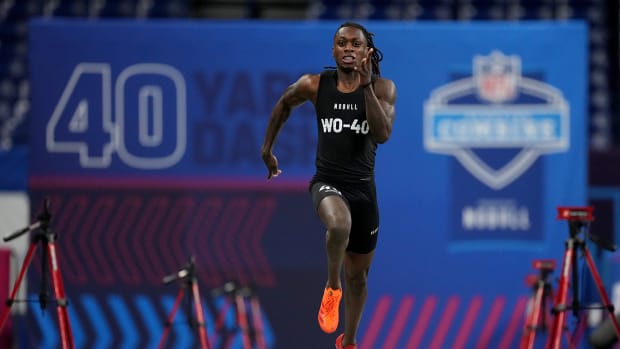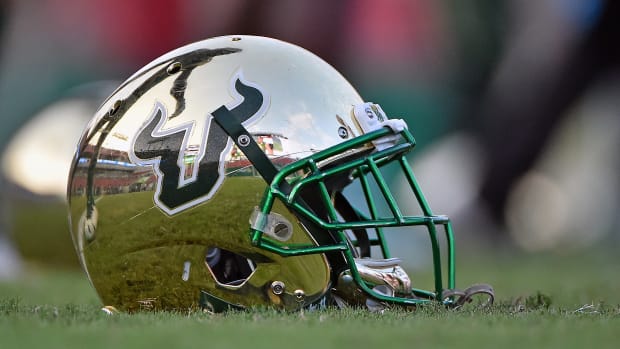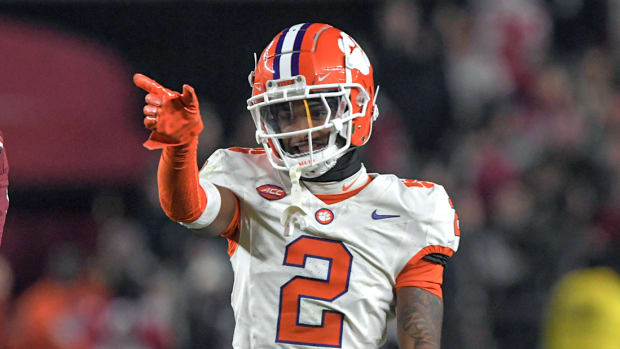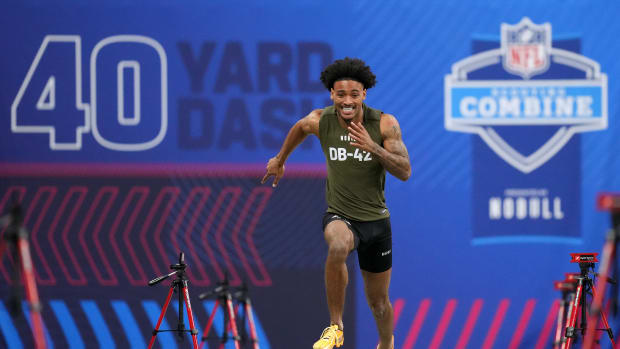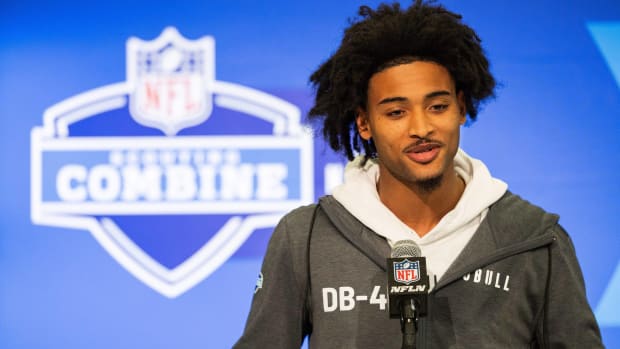Looking for Leaders? Clemson's Already Found Them
There many unknowns when it comes to how college football teams will ultimately handle the three-month layoff of football activities.
Sure, players were given workout plans and ways to prepare physically from their homes, but it’s not nearly the same as pumping iron in the team facility weight room or running stairs at the stadium with your teammates in the blazing heat.
Those experiences in May, June and July build character, work ethic and chemistry. Thankfully for college football, players at many schools, including Clemson, are already back on campus and working out as part of the NCAA’s plan to get football going this fall.
However, there are schools that missed out on spring practice altogether. Others, like Dabo Swinney’s Tigers, got enough in to feel better about their teams moving forward, but they still didn't complete the full process.
Regardless, every team in college football is looking for leaders this time of year. With voluntary workouts going, and with more than a month until coaches can begin working with players in an extended fall camp, it’s up to the student-athletes to organize and practice among each other.
This is where leadership truly shows and builds toward the season. Typically, Clemson holds a practice right before their annual spring game where the coaches essentially assign coachless workouts for the summer. Veteran players take the lead and make sure expectations are met at a time when coaches can’t have contact.
Since Clemson didn't return after spring break to complete the final six workouts, it’s likely much of that had to be done virtually during the pandemic shutdown. Still, this 2020 version of the Tigers is entering unprecedented waters like everybody else.
How important are any opportunities to build leadership?
“Developing leadership and chemistry is a daily commitment,” Swinney said this spring. “It just never stops, ever. It’s our team meetings. It’s how we message everything. It’s individual meetings, how we talk to them. It’s everything. And then it’s how we do our accountability teams.”
It’s everything at a time when there’s been very little in terms of normal football activities. However, Clemson doesn’t appear to be in bad shape.
Yes, the Tigers are replacing some incredible leaders, especially on the defensive side of the ball. K’Von Wallace, Tanner Muse, Isaiah Simmons and A.J. Terrell, who were all selected in the 2020 NFL Draft, led tremendously in various ways last season.
The offensive line saw four seniors, who all had dynamic and distinct personalities, walk out the door. Receiver Tee Higgins, a second-round draft pick, was one of the faces of the program, and now junior pass-catcher Justyn Ross is out for the season and will have to lead from the sideline.
Clemson was one of the younger teams in college football in 2019, and it still reached the national title game. That means there are a ton of players looking to assume some of the leadership roles left behind.
But the Tigers are fortunate. It’s not about finding those new voices. Instead, it’s about hearing and listening to the ones they already have.
Saturday, a football player-led “Black Lives Matter” demonstration took place on Clemson’s campus in hopes of making a difference in trying times.
Four Tigers - quarterback Trevor Lawrence, running back Darien Rencher, receiver Cornell Powell and linebacker Mike Jones Jr. - helped organize and lead the event.
“I think our generation really is trying to push the ball forward and take it to the next (level) of our generation,” Rencher said. “We just joined in on a fight and I feel like it's gonna look different for us to take a step. I feel we're doing that. I think that's what we've done on our team, our staff, and ultimately like that's what we want to continue to do in our community as we join the fight so many people have been trying to fight for equality in South Carolina and the world at large.”
That is leadership that far transcends a football field, but it will certainly be a group that will command the attention of a locker room once the season begins.
Leadership comes in various forms, and these four are a great example of that. Lawrence, a junior, is clearly the face of the program and one of the most recognizable and voices in all of college football. Of course, he’s considered a leader on this team due to his position, status and experience.
Rencher, a senior, is in a very different situation. The former walk-on from nearby Anderson has been a visible and impactful leader in his community for years off the field, and just because he won’t get the carries of Travis Etienne, it doesn’t mean his leadership won’t be felt all over the program.
Powell, who’s entering his fifth season at Clemson, possesses a wealth of knowledge and experience that will help players of all ages progress in their careers, even though he hasn’t had a ton of success at a position that routinely sends Tigers to the NFL.
And then there’s Jones, a redshirt sophomore who is looking to replace Simmons. Well, he’s already been a tremendous leader during this movement without being a household name. Jones has been an intelligent voice of reason, and one that has pleaded for change on the campus he attends every day. People are listening. His teammates will too.
Those four players will have major voices throughout 2020, but they aren’t the only ones. Etienne is the leading rusher in Clemson history, and despite the senior’s humble personality, he’s clearly grown into a leader in a young running back room.
Several of the new offensive line starters, like Matt Bockhorst and Cade Stewart, will have a voice. Returning left tackle Jackson Carman is taking more of a leadership role.
The defensive leadership shifts from the secondary, which is now quite young and inexperienced, to the all-returning defensive front and to middle linebacker James Skalski, one of the team’s best leaders.
While some of these voices and examples are going to be new, there’s little question that Clemson is loaded with players who have the ability to keep the culture and chemistry of the program going strong.
What little spring the Tigers got combined with the impressive organization of players wanting to make a difference in their community and world, that lull during the shutdown won’t hold Clemson back when it comes to building crucial leadership.


